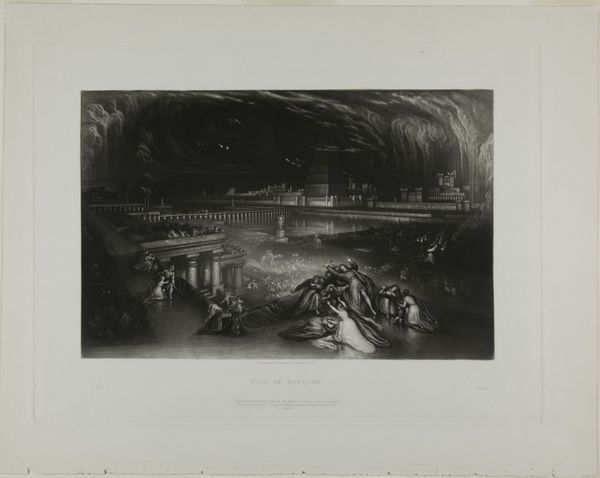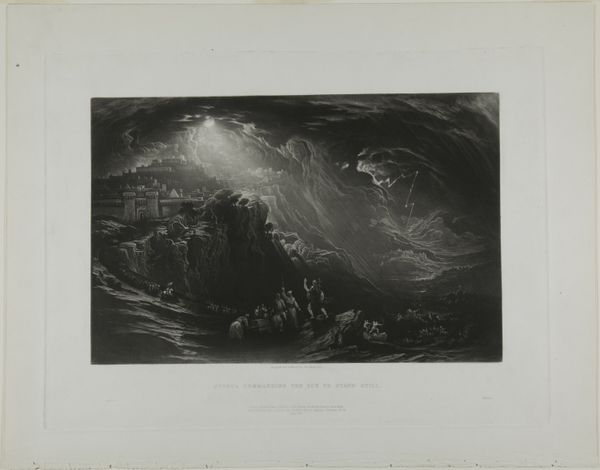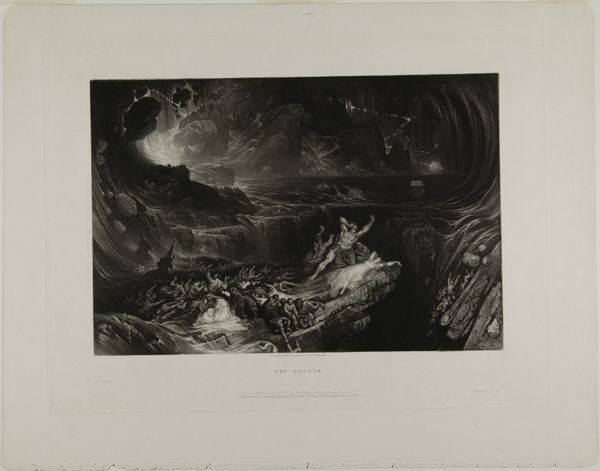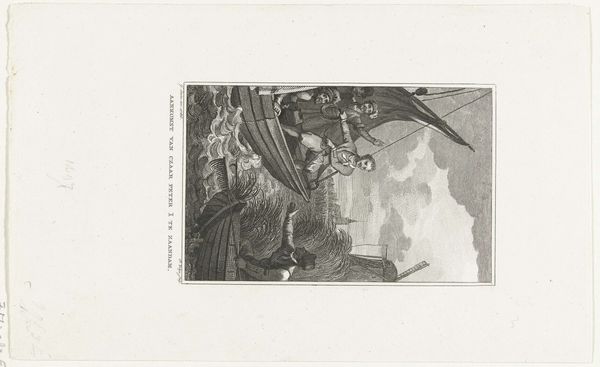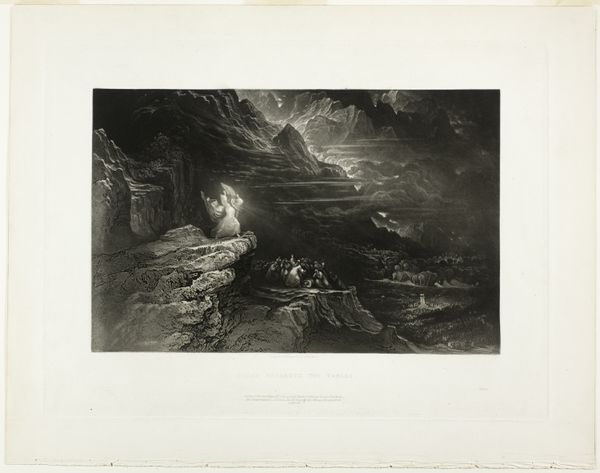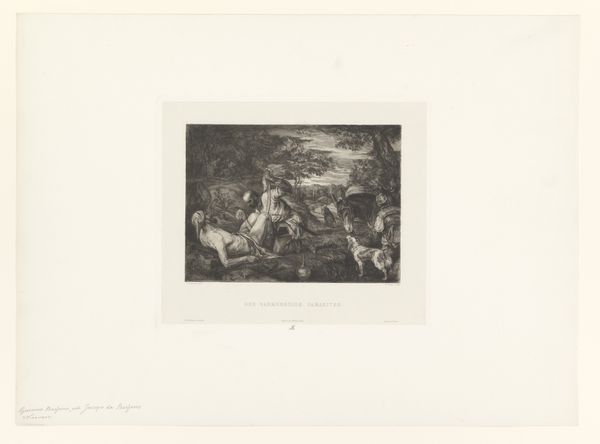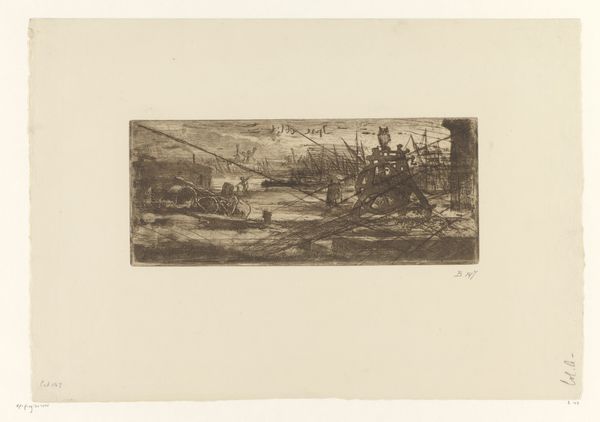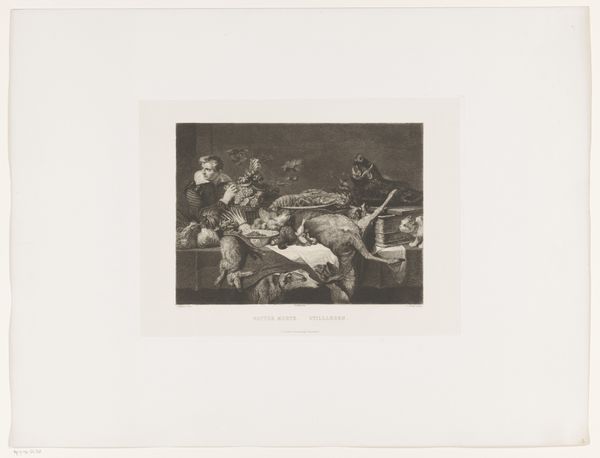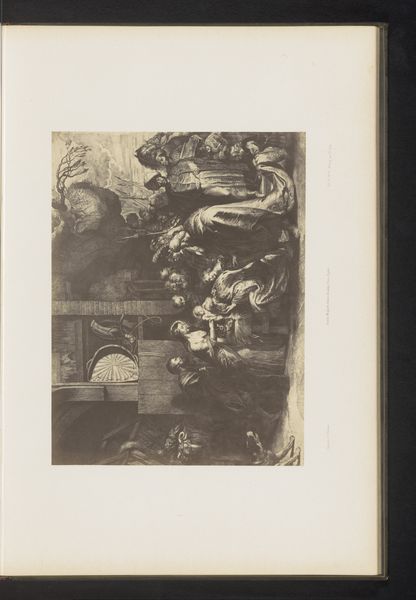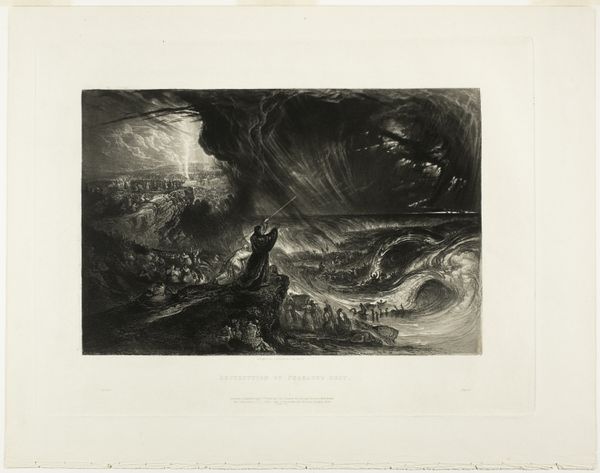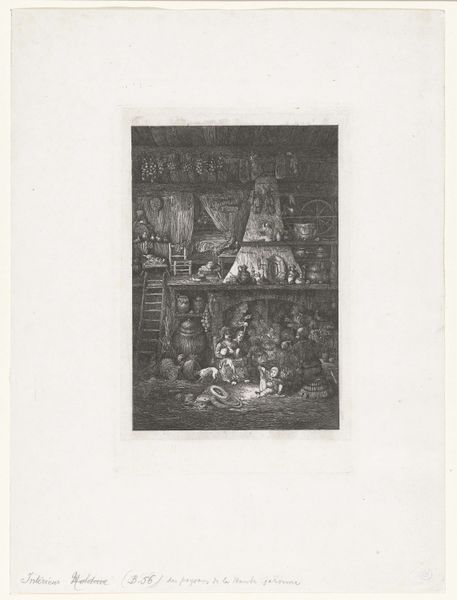
drawing, print, paper, charcoal, engraving
#
drawing
#
narrative-art
# print
#
landscape
#
charcoal drawing
#
paper
#
romanticism
#
cityscape
#
charcoal
#
history-painting
#
charcoal
#
engraving
Dimensions: 190 × 290 mm (image); 268 × 357 mm (plate); 329 × 416 mm (sheet)
Copyright: Public Domain
Curator: John Martin's print, "The Fall of Nineveh," executed around 1835, offers a glimpse into a biblical apocalypse. What stands out to you at first glance? Editor: It's intensely dramatic. The sheer blackness, only punctuated by flashes of light, creates a powerful sense of impending doom. I'm curious about the material qualities of a print being able to convey such depth. Curator: Note the careful orchestration of light and shadow. Martin utilizes a high contrast that almost certainly echoes the sublime of artists like Fuseli, but achieves an aesthetic effect uniquely his own. The deep blacks and stark highlights direct the eye through the chaotic composition, creating spatial dynamics which evoke an awe-inspiring—yet terrifying—experience. Editor: Exactly. It's almost a study in textures, rendered solely through the manipulation of darkness. One wonders about the laborious process, the layering of ink, the biting of the plate. Was this a mass produced artwork or something more bespoke? I am quite curious about its accessibility, as the detail put into creating the effect seems rather advanced for the time period. Curator: The printmaking techniques employed—likely a combination of engraving and etching—allowed for the reproduction of his vision for a wider audience, while the inherent characteristics of the materials shape our perceptions. The lines create patterns across the architecture. How the built environment seems both solid and ephemeral contributes to the narrative's intensity. Editor: True, and focusing on materiality allows me to explore how the artist worked with these limitations—perhaps embraced them. The fineness of line in certain areas versus the heavy blotting elsewhere seems deliberate, highlighting both the precision and the raw power Martin intended. I see his treatment of labor, and accessibility as playing major roles. Curator: Undoubtedly. And by considering these textual elements as a visual language, a lexicon for representing not just the Fall, but also the sublime and power, this work generates interpretations beyond simple narrative illustration. The medium acts as a translator of emotion, solidifying Martin’s standing within the Romantic landscape. Editor: I agree. Thinking about it, seeing this cataclysm reduced and delivered on a piece of paper raises very interesting questions about art's role, even in this context. This feels like much more than simply depicting historical or religious event. Thank you. Curator: Indeed. The Fall resonates across a multiplicity of layers; to ponder form, making and material helps illuminate its depths.
Comments
No comments
Be the first to comment and join the conversation on the ultimate creative platform.
